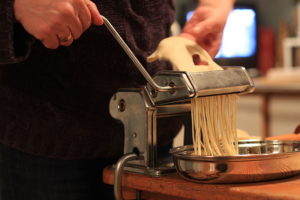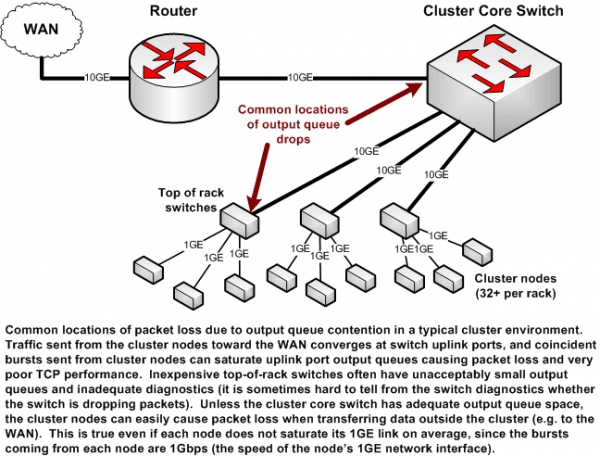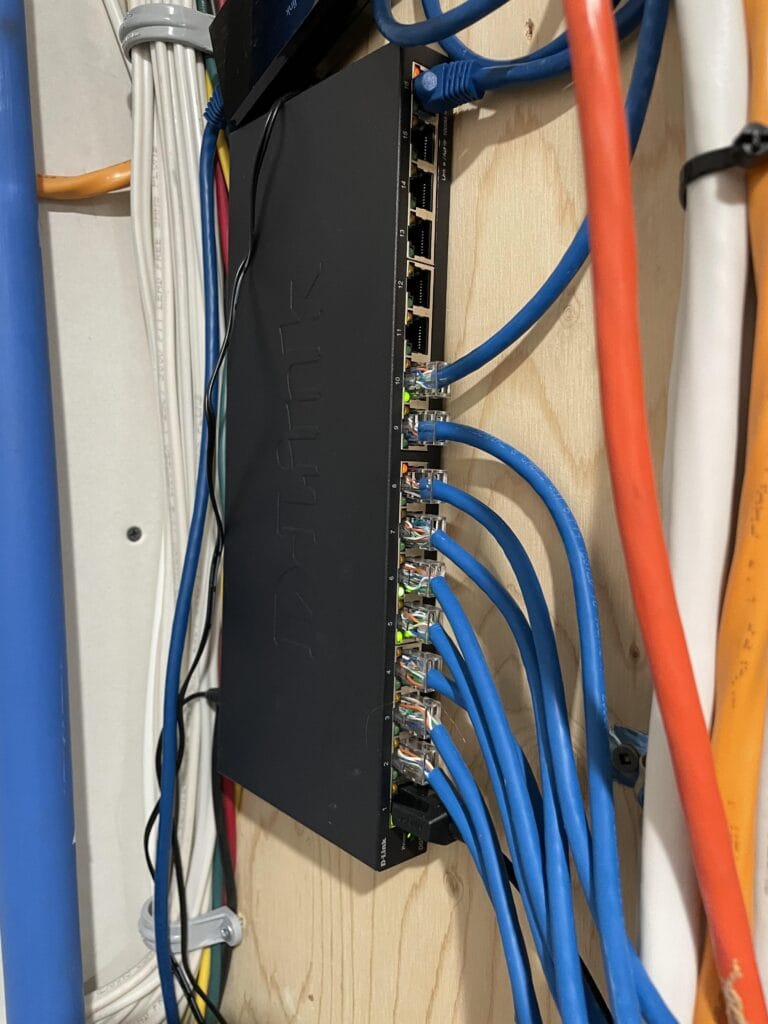Non-electric household appliances offer simplicity and reliability. They function without power, providing sustainable alternatives.
In today’s world, where technology dominates our daily lives, non-electric household appliances stand out. They connect us to simpler times, offering benefits beyond modern gadgets. These appliances reduce energy use, helping the environment and cutting costs. Many are easy to use and maintain, appealing to those who value efficiency.
Their design often reflects durability and timeless style, providing long-lasting service. From manual coffee grinders to hand-cranked mixers, these tools offer unique experiences. They remind us of the beauty in simplicity and self-sufficiency. Exploring these appliances can transform daily routines and encourage a more mindful lifestyle. Discover the charm and practicality of non-electric household appliances in your home.

Credit: www.appliance-insurance.co.uk
Introduction To Non-electric Appliances
Non-electric household appliances are gaining popularity. People want eco-friendly and sustainable options. These appliances work without electricity. They use manual power or natural resources. Many find them practical and cost-effective. They help reduce carbon footprints. These tools are essential for eco-conscious living.
Rise Of Eco-friendly Living
Eco-friendly living is growing worldwide. People seek sustainable lifestyles. Non-electric appliances support this trend. They offer a greener choice. They align with environmental goals. They reduce reliance on electricity. Communities are embracing them. They want a healthier planet.
Benefits Of Reducing Electricity Use
Reducing electricity use saves money. It lowers utility bills. It cuts energy consumption. Non-electric appliances help achieve this. They are cost-efficient. They work during power outages. They foster independence. They promote environmental responsibility.

Credit: www.pinterest.com
Kitchen Essentials
In today’s fast-paced world, many of us are seeking ways to simplify life, especially in the kitchen. Non-electric household appliances are becoming increasingly popular for their simplicity and eco-friendliness. These kitchen essentials not only reduce your carbon footprint but also bring a sense of nostalgia and mindfulness to daily routines. Imagine savoring a cup of coffee made with your own hands or blending a smoothie using your own strength. Let’s explore some key non-electric tools that are essential for a sustainable kitchen.
Manual Coffee Grinders
Grinding coffee beans manually can transform your morning ritual. A manual coffee grinder allows you to control the grind size, enhancing the flavor of your brew. You might find the process therapeutic, as you engage with each step of making your coffee.
Consider how different your morning feels when you’re actively involved in making your coffee. The aroma of freshly ground beans is unmatched, making the effort worthwhile. Plus, you’ll appreciate the absence of the noisy electric grinder.
Many manual grinders are compact and portable, making them perfect for travel or small kitchens. They are also environmentally friendly, requiring no electricity. Have you ever thought about how small changes in your daily routine can contribute to a greener planet?
Hand-powered Blenders
Hand-powered blenders are another great addition to your non-electric kitchen arsenal. They’re perfect for making smoothies, soups, or even baby food without relying on electricity. This tool invites you to be more present and intentional in your cooking process.
Imagine hosting a picnic where you whip up fresh smoothies on the spot using a hand-powered blender. It not only impresses your friends but also keeps you connected to the food you prepare. Have you ever considered the satisfaction that comes from making meals with your own hands?
These blenders are easy to clean and store, taking up minimal space in your kitchen. They are durable and often less costly in the long run compared to electric alternatives. Are you ready to embrace a more hands-on approach to your culinary adventures?
Laundry Solutions
In the realm of non-electric household appliances, laundry solutions hold a timeless charm. They offer simplicity and sustainability, making them ideal for eco-conscious households. These tools are not only efficient but also easy to use. Embracing them allows one to contribute to environmental conservation. Let’s explore some traditional methods of laundry care that continue to be relevant today.
Washboards And Tubs
Washboards are simple tools used for manual clothes washing. They consist of a wooden frame and ridged metal or glass. Rub clothes against the ridges to remove dirt. This process is effective for small loads. Pairing washboards with tubs creates a complete washing solution. Tubs provide space for soaking and rinsing clothes. They are often made of metal or plastic. Together, these tools form a compact laundry system. Ideal for homes with limited space.
Clotheslines And Drying Racks
Clotheslines offer a natural drying method. They require no electricity, reducing energy use. Hang clothes outside to dry under the sun. This method is environmentally friendly. It also preserves fabric quality. Drying racks serve a similar purpose indoors. They are portable and can be set up anywhere. Racks are useful during rainy days. Both clotheslines and racks are cost-effective solutions. They ensure clothes dry without shrinkage.
Home Heating Alternatives
As energy costs rise and environmental concerns grow, many homeowners are exploring non-electric household appliances. These alternatives provide practical solutions for keeping your home warm and cozy without relying solely on traditional electric methods. Let’s dive into two popular options that can transform your home heating experience: wood-burning stoves and solar water heaters.
Wood-burning Stoves
Wood-burning stoves offer a nostalgic charm while efficiently heating your home. Imagine sitting by a crackling fire, feeling the warmth spread throughout the room. These stoves are not only a heat source but also a centerpiece for gathering.
Installation can be straightforward, especially if you already have a chimney. Make sure to choose seasoned hardwoods for burning, as they produce less creosote and more heat. It’s a hands-on approach, where your effort in chopping and storing wood pays off in comfort.
Have you ever considered the environmental impact? Wood-burning stoves are carbon-neutral, meaning the carbon released is equal to what the tree absorbed during its lifetime. This makes them an eco-friendly choice for those conscious about their carbon footprint.
Solar Water Heaters
Solar water heaters harness the power of the sun to heat your water. This system can drastically reduce your dependence on electric or gas water heating, cutting costs and emissions.
Installation is an investment, but tax credits and incentives can help offset the price. Positioning the panels correctly is crucial; they need direct sunlight for optimal efficiency. On cloudy days, a backup system ensures you never run out of hot water.
Have you thought about the long-term savings? While upfront costs are higher, the reduction in monthly energy bills can be significant. Plus, you contribute positively to the environment, utilizing a renewable energy source. Isn’t it time you considered harnessing the sun’s power?
Whether you opt for the rustic appeal of wood-burning stoves or the modern efficiency of solar water heaters, both methods offer unique benefits. How will you choose to heat your home sustainably?
Cooling Methods
Cooling your home without electricity can save money and energy. These methods are simple and effective. They also keep your indoor environment comfortable. Let’s explore some popular non-electric cooling techniques.
Ceiling Fans
Ceiling fans circulate air in the room. They use manual power. By pushing hot air down, they create a breeze. This breeze cools the skin. Choose larger fans for bigger rooms. Install them in the center of the ceiling. Make sure the blades are angled correctly. This enhances airflow. Ceiling fans are silent and efficient. They are a great addition to any home.
Window Ventilation
Window ventilation helps in cooling homes naturally. Open windows during cooler times. This allows fresh air to enter. It pushes warm air out. Use cross-ventilation for best results. Open windows on opposite sides of the room. This creates a wind tunnel effect. It maximizes airflow. Closing blinds during peak sun hours can help. This keeps heat out. Window ventilation is easy and cost-effective.
Cleaning Tools
In the modern world, technology often dominates household chores. Yet, non-electric cleaning tools remain essential. They offer simplicity and reliability in maintaining a clean home. These tools require manual effort but are effective and eco-friendly. Let’s explore some key non-electric cleaning tools.
Brooms And Mops
Brooms and mops are classic cleaning tools. They are simple and effective. Brooms sweep dust and dirt from floors. They work well on hard surfaces like wood and tile. Choose a broom with sturdy bristles for better results.
Mops tackle wet spills and stains. They keep floors sparkling clean. A good mop absorbs water quickly. Microfiber mops are especially popular. They trap dirt efficiently and are easy to clean.
Non-electric Vacuum Options
Non-electric vacuums offer a sustainable cleaning option. They rely on manual power instead of electricity. Carpet sweepers are a popular choice. They use rotating brushes to lift dirt and debris.
Handheld sweepers are another option. They are compact and easy to use. These tools are great for quick clean-ups. They work well on both carpets and hard floors.
These non-electric options are cost-effective. They require no electricity or batteries. For a green cleaning routine, they are perfect choices.
Outdoor Cooking Equipment
In the realm of non-electric household appliances, outdoor cooking equipment holds a special place for those who cherish the art of cooking in nature. Imagine the aroma of grilled meat wafting through your backyard on a sunny afternoon. Or the satisfaction of baking bread using nothing but the power of the sun. These experiences aren’t just about preparing food; they’re about connecting with the environment and savoring the moment. Let’s dive into two fascinating types of outdoor cooking equipment: charcoal grills and solar ovens.
Charcoal Grills
Charcoal grills are a classic choice for outdoor cooking enthusiasts. They offer a unique smoky flavor that electric grills often can’t match. Picture yourself flipping burgers on a warm summer evening, the scent of charcoal mingling with the sizzling meat. It’s the perfect setting for a family gathering or a casual get-together with friends.
These grills are typically easy to set up and maintain. You only need charcoal and a lighter to get started. Once the coals are hot, you’re ready to cook. Many people find joy in the simplicity and hands-on nature of using a charcoal grill. You control the heat by moving the coals around, giving you a hands-on experience that electric grills don’t provide.
Have you ever tried experimenting with different types of wood chips to enhance your grilling flavor? Hickory, mesquite, or applewood chips can add a delightful twist to your dishes. This flexibility allows you to personalize your cooking style and bring out unique flavors.
Solar Ovens
Solar ovens offer an eco-friendly alternative to traditional cooking methods. They harness the sun’s energy to cook food without any need for electricity or fuel. Imagine baking cookies in your backyard using only sunlight. It’s a fascinating experience that challenges the way we think about cooking.
These ovens are perfect for slow-cooked meals. You set your dish in the oven, and let the sun do the work. It’s a passive cooking method that frees you up to enjoy other activities while your food is being prepared. Solar ovens can reach temperatures high enough to cook a variety of dishes, from casseroles to baked goods.
Solar cooking is a wonderful conversation starter. When guests see your solar oven, they’re often intrigued and curious about how it works. It’s a chance to share your eco-friendly lifestyle and inspire others to think creatively about cooking. Have you ever considered how much electricity you could save by using a solar oven regularly?
Outdoor cooking equipment like charcoal grills and solar ovens not only provide practical cooking solutions but also offer unique experiences that enrich your outdoor activities. Whether you’re grilling with friends or baking using the sun, these tools invite you to explore cooking in a way that’s both fun and rewarding.

Credit: mayflowertrading.com
Impact On The Environment
Non-electric household appliances can reduce energy consumption, cutting down on fossil fuel usage. Their use minimizes carbon footprints, benefiting the environment. These tools help conserve resources, promoting sustainable living practices.
The shift towards non-electric household appliances is more than just a nostalgic nod to the past—it’s a meaningful step toward a healthier planet. By relying less on electricity, these appliances have a significant impact on the environment. They help reduce emissions and conserve resources, making your home not only eco-friendly but also a pioneer in sustainable living.Reducing Carbon Footprint
Switching to non-electric appliances can drastically cut your carbon footprint. Imagine using a manual coffee grinder instead of an electric one. The energy saved daily might seem small, but over a year, it adds up. By reducing electricity use, you’re directly lowering greenhouse gas emissions. Every time you choose a hand-crank tool, you’re contributing to cleaner air. Have you ever wondered how much energy your electric gadgets consume? With non-electric options, you have a chance to make a real difference.Conserving Natural Resources
Non-electric appliances are champions in conserving natural resources. Consider a solar oven—a perfect example of harnessing the sun’s power. It cooks your meals without depleting fossil fuels. Water-saving non-electric dishwashers are another game-changer. They use less water compared to their electric counterparts, ensuring that precious resources are not wasted. How often do you think about the water footprint of your daily chores? By opting for non-electric solutions, you’re actively preserving the planet’s resources for future generations.Embracing non-electric appliances not only benefits the environment but also empowers you to make conscious choices. Imagine the collective impact if more households made this switch. Are you ready to lead the charge in sustainable living?Future Of Non-electric Appliances
In a world increasingly conscious of energy consumption and sustainability, non-electric household appliances are making a significant comeback. As technology evolves, so does the design and functionality of these appliances. They offer a unique blend of practicality and eco-friendliness, promising a future where households can operate efficiently without relying heavily on electricity. Imagine a kitchen where the whir of machines is replaced by the quiet efficiency of manual appliances. Could this be the future we’re heading towards?
Innovation In Design
Modern designers are pushing boundaries with non-electric appliances. They focus on efficiency and ease of use. Take the manual coffee grinder, for example. It now features ergonomic designs that make grinding effortless. These innovations aim to enhance user experience while reducing energy consumption.
Non-electric appliances are also becoming smarter. Think about the advanced pressure cookers that regulate temperature without electricity. This innovation is about marrying tradition with technology. It’s about getting the best of both worlds: the simplicity of manual operation with the efficiency of modern design.
Incorporating Modern Aesthetics
Today’s non-electric appliances are not just functional; they’re stylish. Designers are embracing sleek lines and contemporary finishes. A hand-crank blender might look like a piece of art on your countertop. This shift towards aesthetics means you can match these appliances with any kitchen style.
Have you ever chosen an appliance based purely on its looks? You’re not alone. Aesthetic appeal is a powerful factor in appliance selection. It’s about creating a space that’s not only functional but also visually pleasing. Imagine a kitchen where every tool is a conversation starter. That’s the potential of non-electric appliances incorporating modern aesthetics.
As you explore the possibilities with non-electric appliances, consider how they fit into your lifestyle and home design. They offer more than functionality; they bring a sense of purpose and style. What could be more rewarding than crafting your space to align with your values and tastes?
Frequently Asked Questions
What Are Non-electrical Home Appliances?
Non-electrical home appliances operate without electricity. Examples include manual coffee grinders, hand-cranked juicers, and mechanical clocks. They are often powered by human effort or mechanical systems. These appliances offer eco-friendly alternatives, reducing electricity usage and promoting sustainability in homes.
What Are Examples Of Non-electrical Equipment?
Non-electrical equipment includes hand tools, bicycles, mechanical clocks, wind-up toys, manual typewriters, and gas-powered stoves. These items operate without electricity, relying on manual or alternative power sources. They offer practical solutions in various settings and are essential for tasks where electricity is unavailable or unnecessary.
Which Household Appliance Uses The Least Electricity?
LED light bulbs use the least electricity among household appliances. They consume significantly less power than traditional bulbs. Opting for energy-efficient models further reduces electricity usage. Keep your appliances well-maintained to enhance efficiency and save on energy bills.
Which Of The Following Is Not An Electrical Appliance?
A wooden chair is not an electrical appliance. Electrical appliances require electricity to operate, like microwaves or fans.
Conclusion
Exploring non-electric appliances can simplify life. These tools offer reliability and ease. They work without power, saving energy. From manual mixers to wind-up clocks, options abound. Each serves a purpose, enhancing daily tasks efficiently. Choosing these appliances supports sustainability. They reduce electricity use, helping the environment.
Their simplicity appeals to many. Embrace the charm of low-tech solutions. These devices remind us of simpler times. Practical and effective, they fit many homes. Consider adding non-electric tools to your household. A step towards eco-friendly living. Enjoy the benefits they bring.










